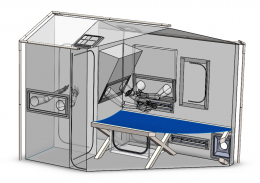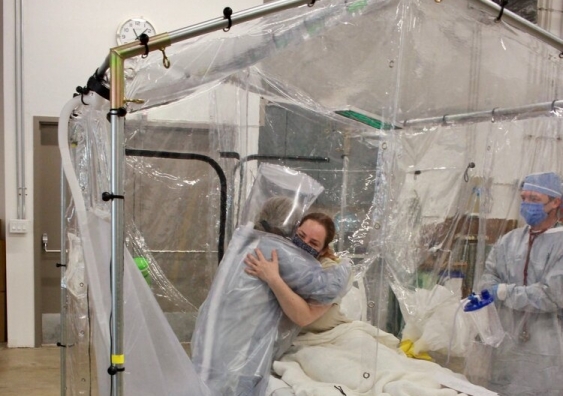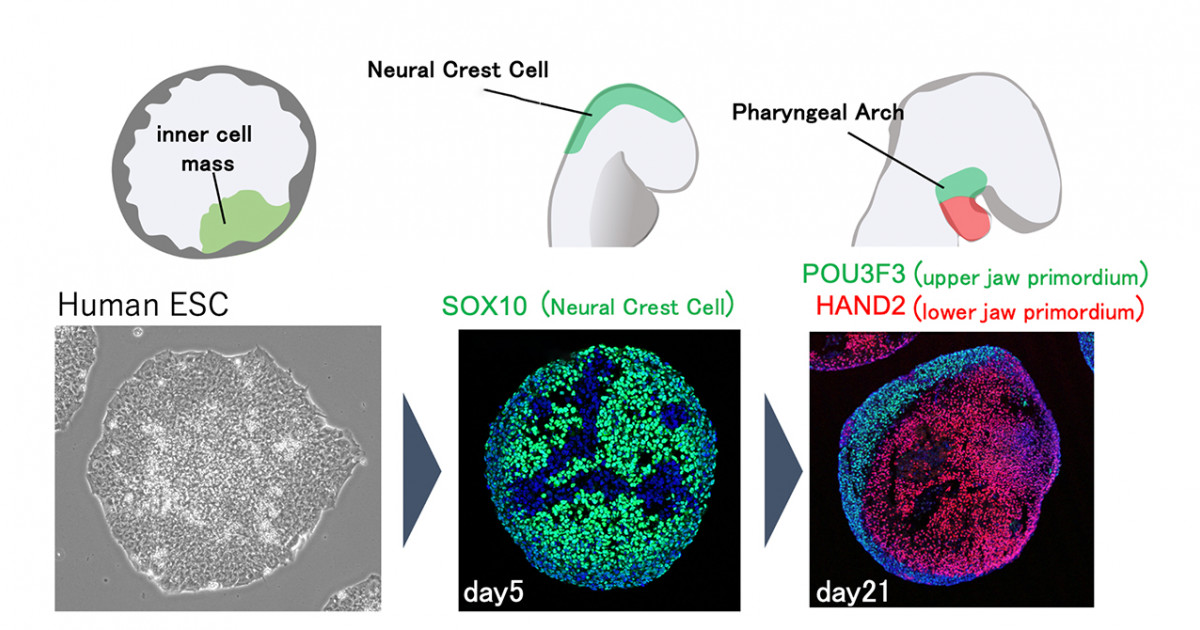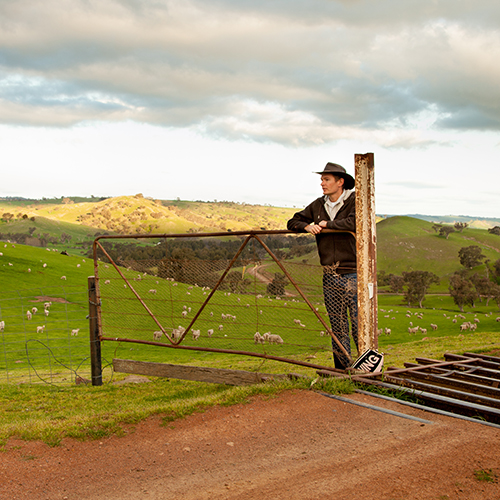A negative-pressure tent has been designed to give COVID-19 patients a more human experience during treatment in quarantine.
“For patients in quarantine in healthcare settings during COVID-19, the separation from family and the lack of face-to-face contact – even with healthcare personnel – can be very isolating,” says UNSW’s Selena Griffith. Photo: Shutterstock
A new airborne infection isolation tent will allow hospitals to scale their response to COVID-19. The low-cost compact tent was designed by a multinational team including Selena Griffith from UNSW Art & Design. It can be erected as a temporary solution to rapidly evolving infectious diseases.
The isolation tent, called the Care Cube, has undergone rapid prototyping and evaluation in partnership with OtherLab, an independent research and design lab, and the Centers for Disease Control and Prevention (CDC), a national public health institute, in the US.

Rather than relying on hazmat suits to prevent infection, the Care Cube inverts the model focusing instead on containing the patient. Image: Otherlab
Rather than relying on hazmat suits to prevent infection, the Care Cube inverts the model. It has a negative-pressure area for the patient as well as antechambers for the safe entry and exit of medical staff. Focusing on containing the patient allows for the vast majority of caregiver interactions to happen from the outside.
“We wanted to allow for a more human experience for families, patients and carers – hence the name – without compromising the safety and convenience of medical personnel,” Ms Griffith says.
“For patients in quarantine in healthcare settings during COVID-19, the separation from family and the lack of face-to-face contact – even with healthcare personnel – can be very isolating.
“The Care Cube tries to reduce this. Its transparent windows let loved ones see their family members receiving treatment, and a “hug wall,” allows for physical comfort in the form of hugs and hand holding.”
Medical personnel also have protected access to the patient, and the interior of the cube, through the hug wall, making simple medical procedures like checking vitals possible without the need for suit changes. There is also a ventilated Hug Suit with integrated gloves that allows full physical contact with the patient.
The design evolved in response to the Ebola epidemic, where establishing community trust was paramount.
“The Care Cube was designed to contain infection and assist with breaking down the barriers between foreign aid workers and local affected communities. By removing the intimidation of hazmat suits and the like, it helps to fosters trust,” Ms Griffith says.

The CareCube allows for a more human experience for families, patients and carers without compromising the safety and convenience of medical personnel. Photo: Otherlab
The tent, which is approximately 3m x 3m x 2m in size, is designed to fit most single-patient hospital rooms or enable multiple units to be used in larger spaces and folds down for easy storage. Its air handling meets CDC guidelines for surgical procedure and delivery rooms.
Software tools allow caregivers to tweak containment designs to meet the specific needs of the communities and geographies they serve. In Ebola settings, the Care Cubes were also outfitted with a variety of hygiene solutions, from bucket-style toilets, to showers, to in-ground drain and septic systems.
“With infectious diseases like COVID-19 and Ebola, the ability to move at speed is vital. We hope that the Care Cube can contribute to stemming the pandemic,” Ms Griffith says.
The Care Cube is currently in production in the US and will shortly be released in Australia.








